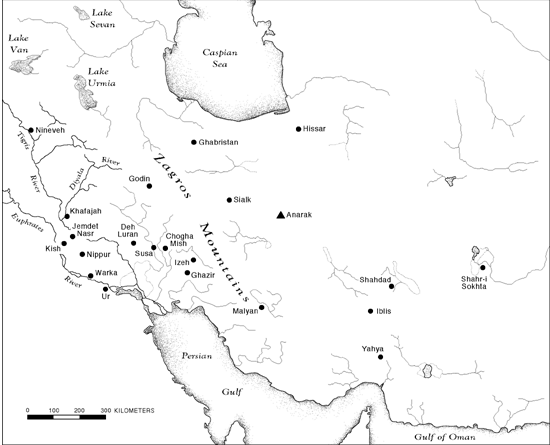|
MESOPOTAMIA AND IRAN |
||||
 |
||
|
Archaic Near Eastern civilization extended from Sumer and Babylonia to the west along the upper reaches of the Euphrates river and to the east through Elam to Anshan (Malyan) in the Zagros mountains and beyond. Within this vast territory the urbanizing polities, the farmers, and the pastoralists not only shared a joint history, but were also inextricably entangled in a single network of ecological and evolutionary processes that form the context and much of the motivating force behind their history. The great city-states of Sumer and Babylonia—well known from excavations at Ur, Warka, and other sites in Mesopotamia—stand in our imagination as fundamental exemplars of archaic civilization. Excavations revealed temples, ordinary houses, and a rich variety of objects ranging from spectacular works of art wrought in precious materials to prosaic utilitarian objects of stone and clay. Archaic Sumerian economic texts and lexical lists, together with literary texts preserved in later copies, add detail and texture to our vision of Sumerian history, culture, and economic life. The literary texts also document Sumerian contacts with Elam and Anshan. Although these early references are in the form of heroic myths of uncertain historicity, they nevertheless forcefully introduce in vivid detail the characteristic forms of interaction between Sumer and Elam/Anshan. These stories tell of trade to supply rare materials for Sumerian craftsmen, diplomacy to assure the flow of trade and to adjust the balance of power and, when all else fails—warfare. Archaeological research in Iran has revealed a flourishing Elamite civilization in lowland Susiana and in the Zagros mountains. The intense interaction between Elam/Anshan and Sumer found in such poetic tales as "Enmerkar and the Lord of Aratta" and "Lugalbanda and the Thunderbird" is given substance by archaeological discoveries at Malyan (Anshan) and contemporary sites in the Zagros mountains and on the Iranian plateau. Bibliography— John Alden, also Sumner |
||
|
|
|||||||